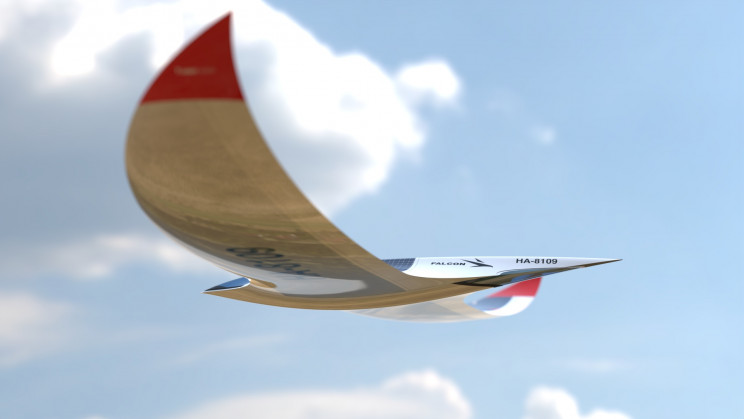The idea that kerosene will be completely replaced by hydrogen one day, when all commercial airliners will be emission-free, remains extremely debatable. Despite the fact that major players in the aircraft sector are aggressively investing in hydrogen fuel, others consider it an implausible answer for major operations. There are, however, more daring initiatives out there, such as solar-powered airplanes. The thought of a flying machine that can eliminate the need for fuel entirely, whether conventional or sustainable and not require any refueling stops while remaining competent for optimal productivity is undeniably tempting. Some businesses are already trying it on drones, as it appears far more possible for small, autonomous flying aircraft to be powered entirely by solar energy.

Product designers like Laszlo Nemeth of Lasky Design appear to believe so. Designers, of course, have the convenience of being able to just let their creativity run wild without being constrained by technological constraints. Falcon Solar is a visually spectacular idea. The whole airplane concept is eye-catching, and the design is inspired by birds of prey, as the name suggests. “Even now, nature’s repetition of forms may be a great source of inspiration for design and aid creation with nearly perfectly harmonic aspects such as the golden ratio,” Nemeth explains. The wings, which are bent upwards, appear considerably larger than the sleek body, which has a pointed tip. According to the designer, the fuselage provides an extensive surface for solar panels while also producing “considerable lift.”

The entire premise is based on anticipating what airplanes may look like in the coming years as the industry transitions away from petroleum and toward renewable sources of energy. The prototype ‘Falcon Solar’ solar-powered aircraft maintains an ultra-slim shape that would minimize cabin room, making it ideal for transport or usage as a private jet-inspired aircraft. There are no rudders, rear wings, or vertical stabilizers to control the aircraft’s direction. Fortunately, we are on the verge of developing new technology that will allow for a quick turnaround without the use of these now critical pieces on any flying aircraft. The solar panel array spans the entire length of the wings and should be able to create sufficient energy from the sun while floating above the clouds. For the time being, the aircraft’s cabin appears to be fairly small, and we don’t know if there is enough capacity for passengers to be transported. Who knows, in the nearish future, this craft might be more like a lavish cruise of the skies for billionaires to play with!

There is, at least, optimism, given all of the corporations’ efforts to do research that will lead to zero-emission airline travel. The Falcon Solar concept is incredibly exciting, and it’s fantastic to see how the designers accomplish it; they go to nature for insight into building more sustainable strategies.


